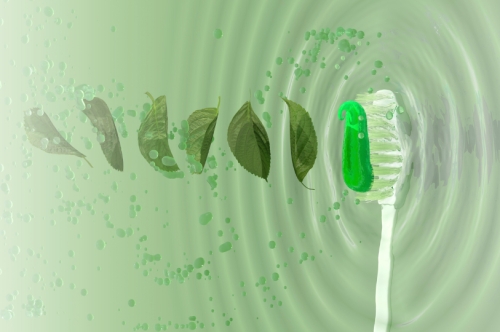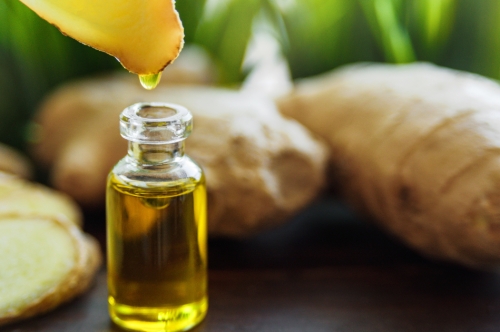Artificial Food Flavours Explained: Benefits, Safety & Uses

Artificial Food Flavours: Enhancing Taste, Innovation, and Consistency in Modern Foods
Artificial food flavours play a pivotal role in enhancing the taste, aroma, and overall sensory experience of a vast array of food products. These synthetic compounds are meticulously engineered to mimic the natural flavours found in foods, creating a heightened perception of taste and enticing consumers’ palates. While some consumers may raise concerns about the use of artificial flavors, they have become an integral part of the modern food industry, contributing to the diversity, affordability, and appeal of a wide range of products.
Table of Contents
- What are Artificial Food Flavours?
- How Are Artificial Flavours Made?
- Natural vs Artificial Food Flavours
- Substances Used in Artificial Food Flavour
- Applications of Artificial Flavours in Food & Beverage Industry
- Pros and Cons of Artificial Food Flavours
- Regulation and Safety of Artificial Food Flavours in India
- Expert Insights: The Future of Artificial Flavours
- Frequently Asked Questions
What are Artificial Food Flavours?
Artificial food flavours are synthetic compounds designed to replicate the taste and aroma of natural flavors found in various foods. These chemical compounds are created through careful blending of individual molecules that mimic the sensory qualities of natural ingredients. The aim is to enhance the flavor profile of food products, providing a consistent and appealing taste experience.
Manufacturers use artificial flavors to recreate flavors that might be difficult to obtain consistently from natural sources due to factors like seasonal variations or cost constraints. These synthetic compounds are meticulously formulated to resemble the desired taste closely, and they can be adjusted to achieve the perfect balance of sweetness, bitterness, acidity, and other flavor components.
Artificial flavors are used in a wide range of food and beverage products, including snacks, beverages, confectionery items, baked goods, and more. They offer versatility in creating unique and consistent flavor combinations, contributing to product innovation and consumer satisfaction.
Explore our extensive range of food flavour manufacturers and best flavours for food to see how both artificial and natural flavours are used in real-world applications.
It's important to note that artificial flavors are subject to strict regulations and safety evaluations by regulatory bodies. These organizations ensure that the use of artificial flavors in food products adheres to safety standards and poses no harm to consumers when consumed within approved limits.
How Are Artificial Flavours Made?
Artificial flavours are developed using a combination of chemicals that mimic the aromatic and taste compounds found in natural foods. The process involves:
- Identifying Key Flavor Molecules: Chemists analyze the molecular structure of natural flavors.
- Sourcing Synthetic Equivalents: These molecules are synthesized in the lab, often from petroleum-based or plant-based sources.
- Blending and Testing: Multiple compounds are blended to achieve the desired flavor profile, followed by rigorous sensory testing.
- Quality Control: Each batch undergoes strict quality control to ensure consistency and safety.
For example, the artificial strawberry flavor may contain over 50 different chemical compounds to replicate the complexity of real strawberries.
Did you know? Many aroma chemicals used in artificial flavours are also essential in perfumery and home care products, highlighting their versatility across industries.
Natural vs Artificial Food Flavours
Natural and artificial food flavors each play distinct roles in the culinary landscape, offering diverse options to enhance taste experiences.
- Natural Flavours: Derived from actual food sources, like fruits, vegetables, and spices. They provide an authentic and recognizable taste that resonates with consumers seeking a connection to nature. Natural flavors are celebrated for their purity and may be associated with health and wellness due to their origin from real ingredients.
- Artificial Flavours: Synthesized compounds designed to replicate the taste of natural ingredients. They contribute to a consistent and predictable flavor profile, essential for mass production and maintaining a standardized taste experience regardless of seasonal variations. Artificial flavors enable food manufacturers to craft unique and innovative flavor combinations, expanding culinary possibilities.
Comparison Table: Natural vs Artificial Flavours
| Aspect | Natural Flavours | Artificial Flavours |
|---|---|---|
| Source | Fruits, vegetables, spices, etc. | Synthetic chemicals |
| Consistency | May vary with season/source | Highly consistent |
| Cost | Higher | Lower |
| Innovation | Limited by nature | Virtually unlimited |
| Regulatory Review | Required | Required |
For a deeper dive into the science and sourcing of both types, visit our expertise page to understand how industry leaders approach flavour innovation.
Substances Used in Artificial Food Flavour
Artificial food flavors are a result of the meticulous blending and synthesis of various compounds that collectively mimic the taste and aroma of natural ingredients. These compounds fall into several categories, each contributing to the overall sensory experience of food products:
- Artificial Flavoring Compounds: The core components that replicate specific tastes. Chemists carefully design and combine these compounds to achieve the desired flavor profile, whether it's fruity, savory, or spicy.
- Aromatic Chemicals: Contribute to the overall aroma of the food product, creating enticing scents that enhance sensory perception.
- Sweeteners: Artificial sweeteners mimic the sweetness of natural sugars without adding calories, crucial for creating low-calorie or sugar-free alternatives.
- Colorants: Responsible for giving food its visual appeal, influencing our expectations of taste before we even take a bite.
- Preservatives: Some artificial flavoring compounds may also function as preservatives, extending the shelf life of the products they're used in.
Example: The popular artificial banana flavor is primarily made from isoamyl acetate, while artificial vanilla is often synthesized from vanillin.
Discover how quality control ensures the safety and consistency of both artificial and natural flavour compounds in food manufacturing.
Applications of Artificial Flavours in Food & Beverage Industry
Artificial flavors are used in a wide array of food and beverage products, ranging from snacks and beverages to baked goods and frozen treats. This flexibility empowers food manufacturers to create innovative products with unique flavor combinations that might not be readily available in nature.
Key Applications:
- Confectionery: Candies, chewing gum, and chocolates often rely on artificial flavors for consistency and cost-effectiveness.
- Beverages: Soft drinks, energy drinks, and flavored waters use artificial flavors to achieve bold and stable taste profiles.
- Bakery: Cakes, cookies, and pastries benefit from artificial flavors to maintain taste regardless of ingredient seasonality.
- Dairy: Flavored yogurts, ice creams, and milkshakes use artificial flavors for variety and innovation.
For inspiration, browse our range of food and beverage flavours and see how artificial and natural options are blended for maximum impact.
Pros and Cons of Artificial Food Flavours
Pros of Artificial Food Flavors
- Consistency: Artificial flavors ensure a consistent taste experience across batches and seasons, guaranteeing consumers get the flavor they expect every time they purchase a product.
- Versatility: These flavors offer the ability to create unique and innovative taste profiles that might not be possible with natural ingredients alone, leading to a broader range of product options.
- Cost-Effectiveness: Artificial flavors can be produced at a lower cost than sourcing and processing natural ingredients, making flavorful products more accessible to a wider audience.
- Shelf Life: Many artificial flavors are more stable than their natural counterparts, extending product shelf life and reducing food waste.
Cons of Artificial Food Flavors
- Perception: Some consumers might associate artificial flavors with lower quality or health concerns, although regulatory bodies ensure their safety for consumption.
- Loss of Complexity: While artificial flavors can mimic basic tastes, they might not capture the depth and complexity of flavors found in natural ingredients.
- Limited Natural Benefits: Natural ingredients often come with added nutrients and health benefits that artificial flavors lack, potentially influencing consumers looking for more wholesome options.
Expert Tip: When formulating new products, leading manufacturers often combine both artificial and natural flavors to achieve the perfect balance of taste, cost, and consumer appeal.
To see how this balance is achieved in practice, check out our mint products for refreshing & pure mint experience, which blend natural and artificial flavouring for optimal results.
Regulation and Safety of Artificial Food Flavours in India
In India, the regulation and safety of artificial food flavors are overseen by the Food Safety and Standards Authority of India (FSSAI), which is the central regulatory authority responsible for ensuring the safety and quality of food products. The FSSAI has established regulations and standards that govern the use of artificial flavors to ensure consumer safety and maintain the integrity of the food industry.
Key Regulatory Points:
- Permissible Levels: FSSAI sets maximum limits for each artificial flavor and additive.
- Labelling Requirements: All food products must clearly label the presence of artificial flavors.
- Safety Assessments: New additives undergo rigorous scientific evaluation before approval.
- Facility Inspections: Regular inspections ensure compliance and food safety standards.
Non-compliance can lead to penalties and even product recalls if safety concerns arise. Globally, similar standards are enforced by the FDA (USA) and EFSA (Europe), ensuring consumer safety across markets.
For more on regulatory compliance and certifications, visit our certifications page to see how Norex meets international standards.
Expert Insights: The Future of Artificial Flavours
The artificial flavour industry is evolving rapidly, driven by consumer demand for novel experiences and healthier alternatives. Recent trends include:
- Clean Label Movement: Manufacturers are developing artificial flavors with fewer additives and more transparent sourcing.
- Biotechnology: Advances in fermentation and enzyme technology are enabling the creation of “nature-identical” flavors that are both cost-effective and sustainable.
- Customization: Brands are leveraging data and AI to create personalized flavor experiences for different markets and demographics.
Industry Data: According to a 2023 report by Grand View Research, the global food flavor market is expected to reach $20.12 billion by 2027, with artificial flavors accounting for a significant share due to their versatility and cost benefits.
Stay updated with the latest trends and innovations in the flavour industry by following our news & events blog.
Frequently Asked Questions
What are the commonly used artificial food additives?
Commonly used artificial food additives include artificial flavours, artificial sweeteners (e.g., aspartame, sucralose), artificial colourants (e.g., Red 40, Yellow 5), and preservatives (e.g., sodium benzoate, potassium sorbate). These additives are used to enhance taste, colour, and shelf life in various food products.
Are artificial food flavours safe to consume?
Yes, artificial food flavors are safe to consume when they meet regulatory standards and are used within approved limits. Regulatory agencies like FSSAI, FDA, and EFSA rigorously evaluate their safety before approval.
Are artificial food flavours vegan?
Most artificial food flavors are vegan, as they are typically synthesized from chemical compounds and do not contain animal-derived ingredients. However, always check specific product labels to ensure compliance with vegan preferences.
How can I identify artificial flavours on food labels?
Look for terms like “artificial flavor,” “flavouring agent,” or specific E-numbers on ingredient lists. In India, FSSAI mandates clear labelling of all artificial additives.
What is the difference between artificial and nature-identical flavours?
Artificial flavours are synthesized to mimic natural flavors but may not be chemically identical. Nature-identical flavours are chemically the same as those found in nature but are produced synthetically.
Can artificial flavours cause allergies?
While rare, some individuals may be sensitive to certain artificial additives. Always consult with a healthcare professional if you have known sensitivities.
Where can I buy high-quality food flavours and aroma chemicals?
Conclusion
In the dynamic realm of food innovation, artificial flavors emerge as essential contributors, enriching the culinary landscape with diverse taste experiences. While respecting the authenticity of natural flavors, artificial counterparts offer consistency, versatility, and cost-effectiveness, fostering creativity and accessibility. Through strict regulatory oversight and adherence to safety standards, these flavors harmonize with modern demands for flavor diversity and consumer preferences. Thus, embracing the role of artificial food flavors in enhancing enjoyment and expanding possibilities bridges the gap between tradition and innovation, contributing to a vibrant and evolving gastronomic journey.












